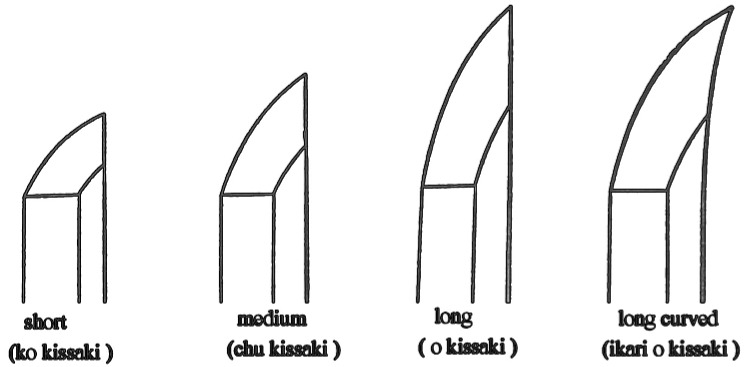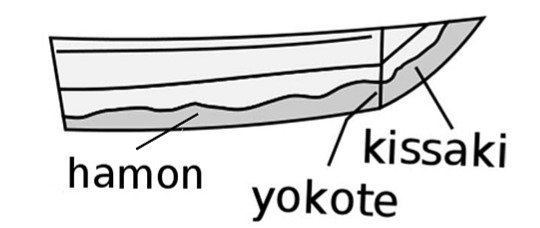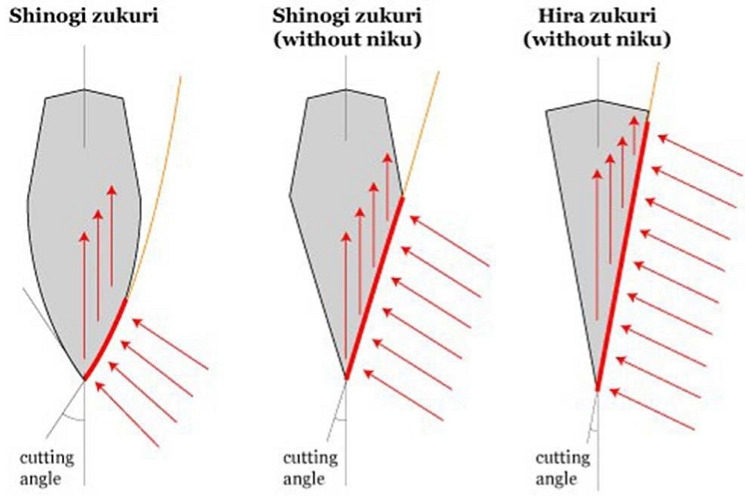katana HANAZUKE - 2.30 Shaku, folded steel AISI 1075, polished imitation hamon, Yokote
Code: K-733



Related products

stylish stand for hunting knives & decorated with golden antlers & natural solid rosewood & in elegant box

tsuba & kashira & fuchi

tsuba & kashira & fuchi

stojan pro meče & osmipatrový & matný, černý

stojan pro meče & svislá poloha & matný, černý
Product detailed description
Katana Hanazuke, folded AISI 1075 Hi-Carbon Steel, imitation hamon, Yokote
nagasa 2.30 Shaku, chu kissaki
Forged Japanese sword KATANA with polished imitation of hardening (hamon) and Bo-Hi groove. Sharp (cut) samurai sword KATANA will find its use as a decoration, but also for active martial arts training. The Katana is not entirely suitable for cutting harder materials. The steel is not partially hardened (hamon is only polished) and therefore has a low degree of hardness. Chopping hard materials would leave marks on the blade of the sword. The attractive and sharp blade, the dark blue glossy decorated saya plus the tsuka (handle) which is covered with genuine stingray skin, all make this katana very interesting and desirable. The katana is stored in a canvas bag and a cardboard box. The blade of the katana is decorated with a polished imitation of the hardening line of a hamon. Company Dellinger disclaims all liability for injury and damage resulting from use. Keep the katana out of the reach of children! Any handling of the samurai sword is your own responsibility. Remember, you have a deadly weapon in your hands!
Decorative katana with blade length of 2.30 Shaku (69.5 cm)
The tip of the blade is shaped shinogi-zukuri and chu kissaki with real Diamond-Shaped Yokote.
Do you need some advice?
We will be happy to help you with your selection or answer your product questions! Call our customer service line at 702 049 048, which is available for you Mon - Fri, 7:30 am - 4:00 pm!Technical description of components
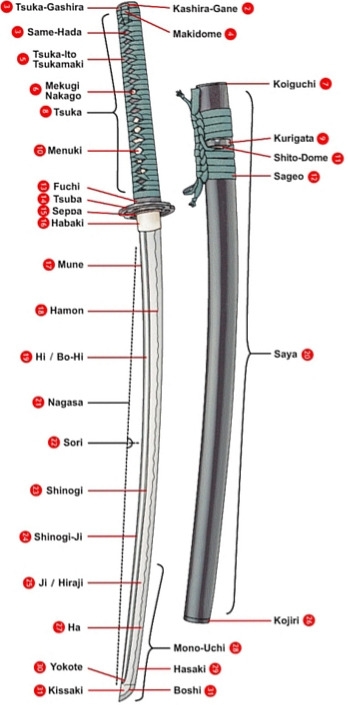
- Blade material - folded AISI 1075 Hi-carbon steel
- Saya: (shell - cover) made of hardwood in dark blue glossy finish. High-quality silk Sage-O braid is tied around the Kurigata (button) of the Sayi (sheath-cloth).
- Tsuba: (guard) black cast with motif
- Tsuka: (handle) wooden core wrapped with genuine stingray (Samegawa) leather with black braid - Ito. The blade of the katana is secured with two mekugi (bamboo pins). You can remove the blade from the handle by pulling out these pins. On each side of the Tsuka (handle) there is a menuki (ornament under the braid). Black handle ending (Kashira).
- Total length of katana (without saya) - 99,5 cm
- Blade length (Nagasa) - 69,5 cm (from the end of Habaki)
- Length of the handle - 26,5 cm
- Tip length (Kissaki) - 4.0 cm
- Weight without Saya - 1050 g
- Habaki - brass with flower motif(length 2.5cm)
We will make a katana for you according to your requirements
We make katanas, wakizashi and tanto knives to customer's specifications. The lead time after payment of the 30% deposit ranges from 60-90 calendar days.Grounds for non-recognition of warranty - misuse
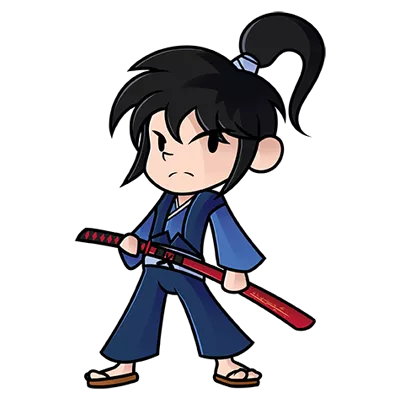
- In general, these are all activities except for traditional chopping test techniques, which involve chopping into special mats.
- Chopping branches, trees and bushes: for this activity, people have developed other tools such as axes or machetes.
- Chopping or swordplay with another sword: destructive damage to the blade of a samurai sword occurs - samurai avoided any direct contact with the enemy to avoid damaging the blade. The repair was long and expensive.
- Never carry a sharp samurai sword with the blade exposed in public: always keep the sword sheathed in the Saya (scabbard). In Germany and other EU countries, this is even an obligation prescribed by gun law.
- Never insert a dirty blade into the Saya: If you are performing chopping tests on fruit, clean and preserve the blade immediately after chopping, otherwise the blade will rust and oxidize.
- Never leave your sword in a damp place such as a porch, shed, cellar or conservatory: This traditional weapon certainly doesn't deserve such treatment. Always clean the blade after use, brush with oil and store the sword in a dry place.
Dellinger guarantee
Products supplied by Dellinger come with a 100% satisfaction guarantee or a risk-free money back guarantee. We guarantee an excellent product that will give you the best service and is proven by many satisfied customers. Each piece can become a wise gift solution for a birthday, wedding or Christmas. Every product that Dellinger offers is carefully inspected. We bring you a lifetime warranty against any hidden defects. If you have any questions - our team is fully at your disposal and will try to help you in any (even unpleasant) situation.Additional parameters
| Category: | katana |
|---|---|
| Warranty: | 2 years |
| Weight: | 1.286 kg |
| steel - blade material: | AISI 1075 Hi-carbon steel, folded |
| the length of the blade (nagasa) from the end of the habaki: | 2,30 Shaku - 69,5 cm |
| Hamon: | no |
| Bo-Hi groove: | ne |
| suitable for sectional tests: | No |

Wakizashi BUKE & Japanese Sword & Yokote & T-10 Steel & Real Choji Hamon

Wakizashi Odawara & Nagasa 1,60 Shaku & Japanese Sword & AISI 1045 carbon steel & polished Hamon imitation & Diamond Shaped Yokote & chu-kissaki tip & Bo-Hi gutter & Blade...

Wakizashi Flowers & Nagasa 1,60 Shaku & Japanese Sword & AISI 1045 carbon steel & polished Hamon imitation & Diamond Shaped Yokote & chu-kissaki tip & Bo-Hi gutter & Blade...




